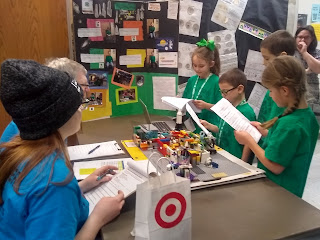One trend that has been clearly witnessed throughout the pandemic is a rise in the number of families choosing to school at home. Recent data from the US Census Bureau shows an increase from 3.3% of US school-age children being taught at home in 2017, to 5.4% in the spring of 2020, to 11.1% by the fall of 2020. As described in the report, the uncertainty of the current environment is causing families to seek alternative solutions for their children's educational and socio-emotional needs. This transition presents youth serving organizations an incredibly rich opportunity to engage families in meaningful learning. Let’s begin by considering a few aspects that support engaging new audiences respectfully.
Cultural humility
Before we begin to connect with home-educated families we need to release ourselves from many of our presuppositions. Stereotyping homeschooling families interferes with our ability to meet present needs. Research has shown that there are a variety of reasons why families choose to homeschool. Each motivation is rooted in a family's sense of autonomy, value and goals. Knowing the family’s intentions allows us to appropriately be an advocate and partner in their educational journey.
Trust
When we begin our approach with humility and interest we can build trust with families, showing them that we value partnership and collaboration in our work. One example of this is holding a listening session with members of a group to gather insights on their needs, goals and interests prior to forming a proposal.
Person-centered approach
Being person-centered ensures that we put the needs of the individual before our organizational goals. Working with homeschooling families provides a rich environment for a person-centered approach. Using innovation and creativity, we may find new opportunities and programs that are able to begin because of the interest that bubbles up in engaging families learning at home.
Putting it on the ground
So how can you get new families and groups to engage with your program? Here is a short list of recommendations and Minnesota 4-H resources that might aid in your development.
- Search your area for local co-ops and homeschooling groups. Reach out to key contacts and invite them to share about their experiences.
- Promote an informational listening session for homeschooling families through your local libraries or other community networks. Consider this template to guide your session.
- Create a project pod specifically targeting skills and interests from local families. Use this staff guide to assist your efforts.
- Use marketing resources and messages specifically designed for homeschool families.
- Intentionally design programs to meet during the day (1:30 - 3:30 p.m. tends to be a valuable time to engage families at home).
- TIP! Parents who homeschool are often willing to volunteer and support the learning experience of their own child and other families.
I would love to hear more about the efforts you have already made.
- What successful approaches have you used to engage homeschool families?
- How have you adapted your local programming to fit their needs?
- What obstacles have you encountered, and how did you overcome them?
You are welcome to comment on this blog post. We encourage civil discourse, including spirited disagreement. We will delete comments that contain profanity, pornography or hate speech--any remarks that attack or demean people because of their sex, race, ethnic group, etc.--as well as spam.

What successful approaches have you used to engage homeschool families?
ReplyDeleteI served our local home-school co-op as a resource for curriculum, contacts, and even offered to come in and facilitate learning interests. This was over a year of building this relationship before this group became a 4-H Club in our county program.
How have you adapted your local programming to fit their needs?
We hosted a mock 4-H Club meeting, youth and families joined us and we lead them through what a 4-H Club meeting could/would look like for them. Much of the time, was Q & A, but it was so helpful to do that in-person rather than via email or over the phone.
What obstacles have you encountered, and how did you overcome them?
Some of the families have youth that are younger than grade K, even though they are not 4-H age, they are still participating (joining the family at the club meetings). They can always showcase anything in open class!
I appreciate the time and patience you took in nurturing the relationship. That is one of the best ways we can build trust and ensure our investment towards the group!
DeleteI have seen clubs find creative strategies to engage younger members that are not yet 4-H age. That is something we should plan for. Whether that is creating a 'nursery play space' or having a separate parent assigned to lead a fun activity that goes a long way on supporting the experience for the whole family. Great work!